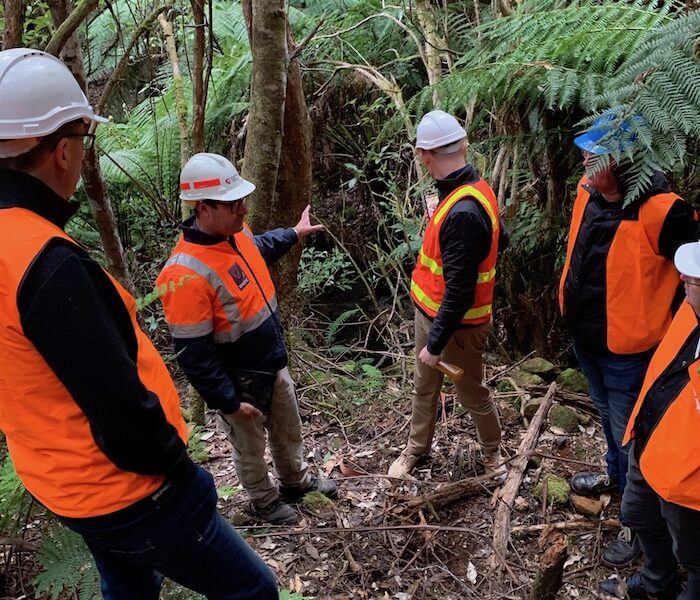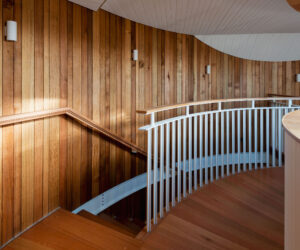An Eye-opening Experience for Fitzpatrick+Partners
Timber is the material of choice for Sydney-based architects Fitzpatrick+Partners. Considered an authority in timber construction on large scale projects, offering expertise on some of the world’s greatest buildings, founding Principal, James Fitzpatrick is turning heads in the design world. Fitzpatrick+Partners were invited to take part in the Tasmanian Visiting Architects Program, an experience designed to showcase Tasmania’s forests and forest management practices. The Partners gained a new found knowledge around Tasmania’s regrowth forests.
Fitzpatrick is a born and bred Tasmanian and has proudly used Tasmanian timbers when possible across his projects. Already equipped with a good understanding and knowledge of Tasmania’s timbers and forests, the tour around the state bolstered his practical sense of the industry while revealing new facts along the way.
“I had a base knowledge and a good understanding of timber and how it’s used, but really I think this showed how little knowledge I did have and how some of that knowledge was actually wrong. It was a real eye-opening experience.” James Fitzpatrick
“One of the big things we’ve learned is the depth of the industry, it’s not an industry that chops down trees, pumps out product, and that’s the end of the story. It has been a long time evolving and it has multitudes of layers and safety guards and protections.
“Meeting some of the foresters that are actually looking after these forests- they won’t be harvested in their lifetimes, so they’re actually creating an asset for a future generation.”
Regeneration – Creating Forests for the Future
Fitzpatrick + Partners were aware of old growth forests and plantation forests, but they were unaware of the third type of managed forest in Tasmania – regrowth, and the volumes of people who contribute to the life of these thriving forests.
“We knew there was a lot of timber and a lot in reserve, but we didn’t understand the categories. We all assumed there was old-growth and plantation, but we didn’t realize there’s another subset in the middle – regrowth, which is actually creating new forest that’s left for around 100 years before it’s reharvested. One of the forests we were walking through had actually been harvested before.
And within these regrowth forests, it’s not just the trees that are thriving. Entire ecosystems, flora and fauna, are flourishing and feeding off of one another to make the environment continue to regenerate.
“That was really interesting seeing these microcultures – there’s watercourses, there’s animals, there’s wildlife in a bushland setting, yet it had been harvested before and will be harvested again. It’s that management and that layering we weren’t aware of.”
A New Knowledge
After touring some of Tasmania’s lush regrowth forests and meeting with some of the industry’s leading players who genuinely want to see what’s best for the states prized forests, Fitzpatrick says that his view of the industry has been altered.
“My perception of the market has definitely changed. It’s more informed, it’s more balanced. I understand the care and what’s happening in the background to protect the systems – it was amazing.”
“Understanding the checks and balances, that there is a policeman and that policeman, the Forest Practices Authorty, is very powerful and very informed and will stop things and will analyze things and check those [Forest Practices] plans. The levels of protection in the system are extreme.”
“From the ecologists we found working in the restoration of bushland to the scientists actually working on individual analysis of product and what the best products were was just incredible.
“That whole depth of people was right through the process. The millers and the producers are only one small part of that. We probably knew more about that end and knew nothing about that beginning process of how the trees come into being.”



